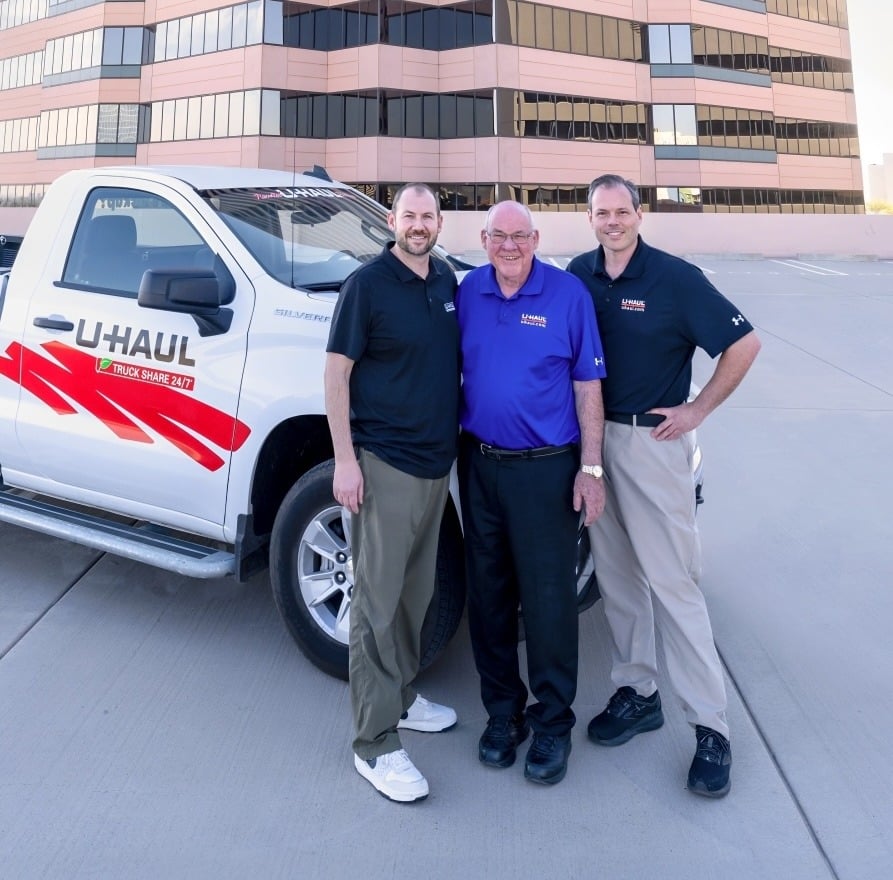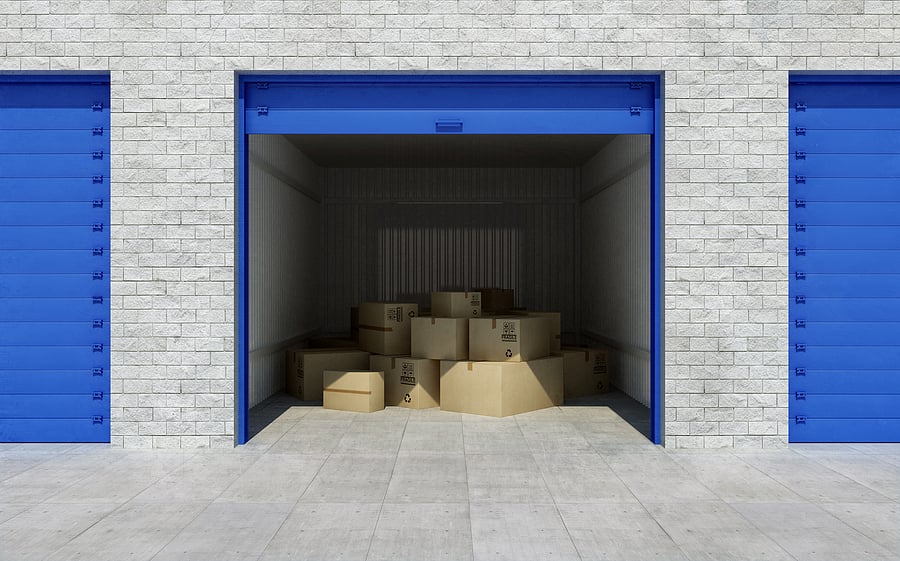Kate Spencer, MAI, Managing Director/Practice Group Leader, Self-Storage Valuation & Advisory at Cushman & Wakefield
Over the past 20 years, self-storage facilities have been slowly evolving. The iconic, first-generation storage properties made up of rows of single-story buildings with non-climate-controlled drive-up units are becoming a rarity, especially in metropolitan markets. Nowadays, these single-story self-storage site layouts are typically reserved for rural areas, where land is more affordable and readily available.
“There is no need for vertical building in rural areas,” says Kate Spencer, MAI, Managing Director/Practice Group Leader, Self-Storage Valuation & Advisory at Cushman & Wakefield.
Conversely, multi-story facilities are becoming the norm in the top MSAs where developable land is scarce and expensive. In order to make projects within these desirable markets feasible, developers began to build up rather than out. Generally containing three or four stories of climate-controlled units, multi-story facilities utilize elevators and high-tech security features to cater to their urban customers.
Locations for self-storage facilities has changed as well. Long gone are the days when storage developers sought out industrial parcels for self-storage projects or built storage facilities as an interim use for passive plots. Instead, high-traffic, retail-oriented locations have become the favored setting for new self-storage facilities.
And, as Spencer notes, this is unlikely to shift anytime soon. “There will always be a mixture of storage product,” she says, “but more will be built in retail areas.”
Retail Presence For Storage
Although storage developers want to build on land within retail areas to be among the stores where potential customers work and shop, many are met with resistance from building committees, community planning boards, municipalities, and/or landlords. What’s more, the extreme cost of occupying space within a shopping center or strip mall can render self-storage impractical.
“Every market is different,” says Spencer, adding that smaller lots may cost more than larger ones due to their location. Within a retail setting, proximity to major thoroughfares and anchor stores directly impacts the cost of land.
Nevertheless, Spencer states that suitable alternatives may be available. She suggests searching for what’s referred to as “inferior” retail parcels. Don’t let the label dissuade you, though, as the only thing significantly lower about these sites is their cost. “It’s a better price for land with retail presence,” Spencer says. While “inferior” retail parcels may not have as much frontage as the leading anchor stores—a definite drawback for strictly retail—it could be a perfect fit for self-storage.
Of course, the cheaper land within a retail development may be set back some from the rest of the stores, but Spencer urges developers not to look at it as a disadvantage. She asserts that having to drive several extra feet off the main road will not deter most prospects from renting self-storage units.
Despite the fact that a good location is paramount to a successful facility, Spencer reminds self-storage developers that the most important aspect of site selection is “not paying too much for land”. Therefore, once you are set on a specific market, it’s best to have several parcels in mind before bidding on any. Feasibility studies should be done for each plot to determine which would provide the best return on investment.
“They must know the challenges of the site and understand what rents are achievable,” says Spencer. “The rents should reflect the site’s attributes.”
For instance, as Spencer mentions, climate-controlled multi-story facilities are typically more expensive to build and maintain, with higher utility costs and insurance premiums, and the additional costs associated with providing climate-control features should be incorporated into the rental rates. “Higher value is derived from higher rental rates on a per square foot basis,” she adds.
Concentrate On Customers
While your future facility’s amenities and features, such as climate control, should be considered before selecting a site, Spencer notes that they should be based on your market’s demographics and environment. Her climate-based suggestions include awnings for rainy areas and drive-through or enclosed loading bays for cold or hot climates.
As for your potential customers, Spencer says, “Understand who will use your facility and gear it towards them. Incorporate the amenities they want into your design.”
Obtaining demographic information from the Census Bureau is a good place to start, but the goal is to gather as many specifics as possible. The 2018 Self-Storage Almanac and the 2017 edition of the SSA’s Self Storage Demand Study are two invaluable tools for detailed information about self-storage customers.
Some self-storage companies have used surveys or focus groups to determine everything from their logo, color scheme, and brand name to their products and services. These methods can provide priceless insight into your potential customers’ wants and needs. Plus, most people are willing to participate with little reward; a discount off their first-month’s rent or another special concession may be all you have to offer for their input.
Spencer also encourages developers to shop the competition to see what’s working at nearby facilities. Shopping the competition reveals opportunities for improvement at your facility as well. You may notice that your competitors do not sell retail items or provide other products, service, or amenities that your self-storage customers may value such as rental trucks, package acceptance, or a conference room.
Up And Coming
Along with the development of more multi-story facilities, Spencer foresees an uptick in mixed-use projects and “facilities that offer different complementary uses”. She notes that, in order to fit into markets with retail requirements, some self-storage facilities are incorporating additional retail space into their designs.
Indeed, cities may have strict guidelines in place that make it difficult for self-storage facilities to be located within downtown or retail areas. This may be because self-storage business do not employ as many persons nor produce as much sales tax as retail businesses. In addition, municipalities may have specific and costly design requirements in place, such as upscale stucco, glass, or brick facades, that could make self-storage financially unfeasible.
Whatever the reason, mixed-use storage projects are popping up across the country with more frequency. As a matter of fact, Spencer recently saw a storage facility in a major MSA within Texas, where a significant portion of its first floor is dedicated to retail, as required by the city to incorporate multiple uses into the project.
Spencer also mentions another interesting concept for self-storage that was announced U-Haul International. In December, the company released details about its $6 million plans to build a “Smart Mobility Center” in Tallahassee, Fla. According to the press release, U-Haul will be converting vacant buildings into a “mobility center that would include up to 85,000 square feet of research and incubator space, up to 150,000 square feet for a smart mobility showroom and self-storage area, and up to 23,000 square feet each for bike sales and service and a Ford Chariot rideshare facility for commuter shuttles.” The showroom will be utilized to display products and prototypes that deploy smart technologies and advancements in mobility. The “Smart Mobility Center” will also include alternative fuel stations and electric vehicle charging stations as well as car and truck rentals.
Speaking of mobility, Spencer notes that a new type of valet storage is in the works. The model is essentially a combination of moving services and traditional self-storage as customers rely on the valet storage company to transport, deliver, and store their belongings. There are retrieval and redelivery options as well. Unlike other valet storage companies, which store customers’ belongings in undisclosed warehouses, this valet storage model stores their customers’ goods in an existing brick-and-mortar self-storage facility. While Spencer believes valet storage could gain traction in large cities, such as New York City, where residents are accustomed to delivery services and lack transportation to move their belongings, she does not foresee it being a threat to traditional self-storage businesses as it complements the existing self-storage industry. “At the end of the day, this model will just provide assistance to customers,” Spencer says, “so it’s kind of a hybrid-valet model.”
Do Your Homework
Certainly, there are countless products, services, amenities, and product types to consider before planning a self-storage business. But the best advice Spencer has for storage developers it to “know your market”. Nothing is foolhardier than jumping head first into a market without first testing the water.
Erica Shatzer is the editor of Mini-Storage Messenger, Self-Storage Now!, and Self-Storage Canada.
More Content
Popular Posts
The self storage industry is in a precarious...
Joe Shoen, CEO of U-Haul, has had enough.
Like its name implies, Surprise, Ariz., a...
Joe Shoen has had enough.
In a record-breaking deal finalized May 12,...
Senate Bill 709 (SB709) has many in the...
Donald Trump has just reclaimed the White...
The question of “abandonment” of stored...
Self-storage operators wear a lot of hats....
In 1992, Clinton strategist James Carville...
Recent Posts
When Neville Kennard left for a work trip to...
Self-storage software is no longer...
The self-storage industry continues to...
Fires in California. Tornadoes in Kansas....
From policy pivots in Ottawa to tariff...
Self-storage operators have struggled to...
Their signature red coats may draw attention...
Nailing down Josh and Melissa Huff for an...



















